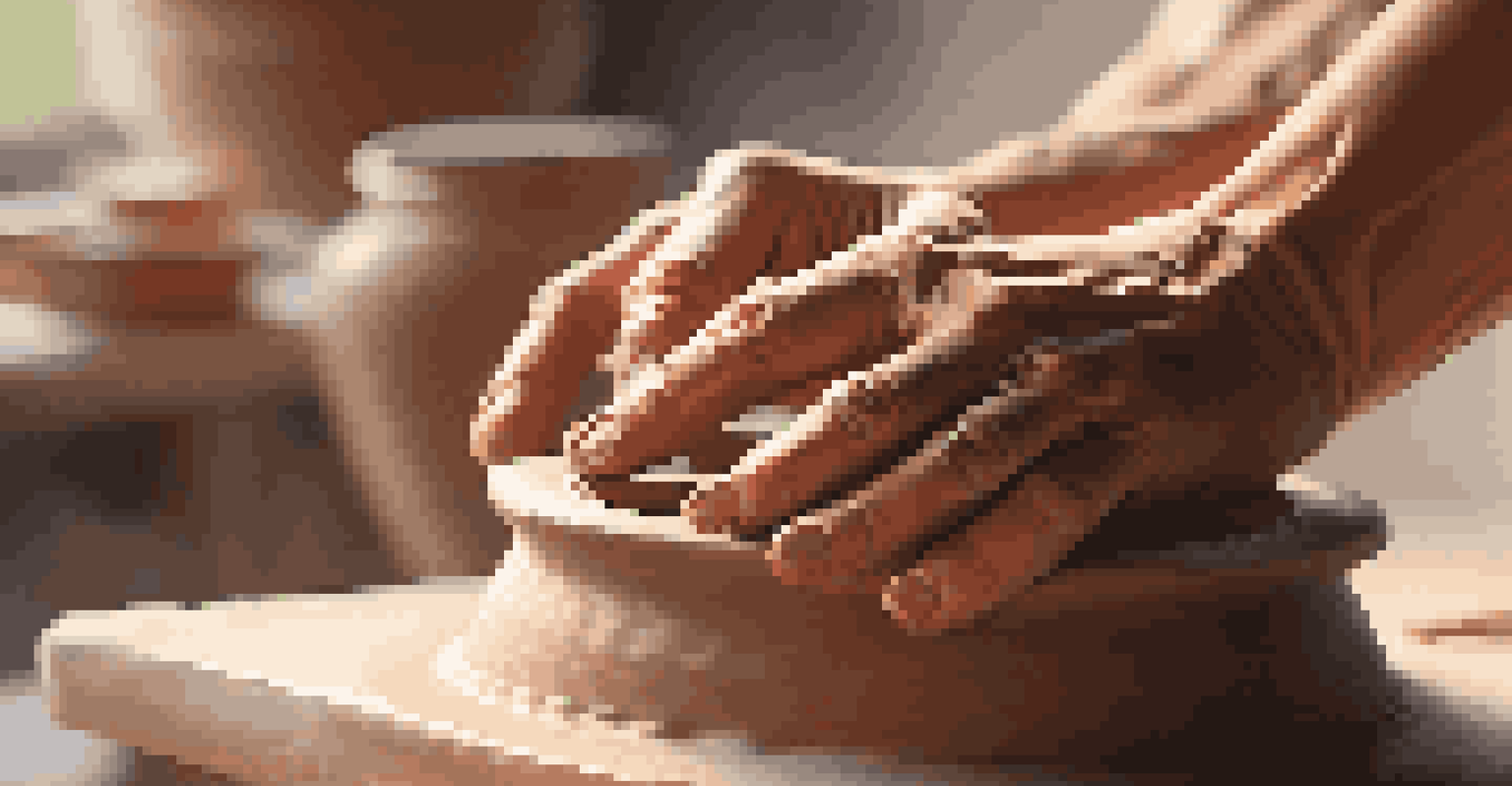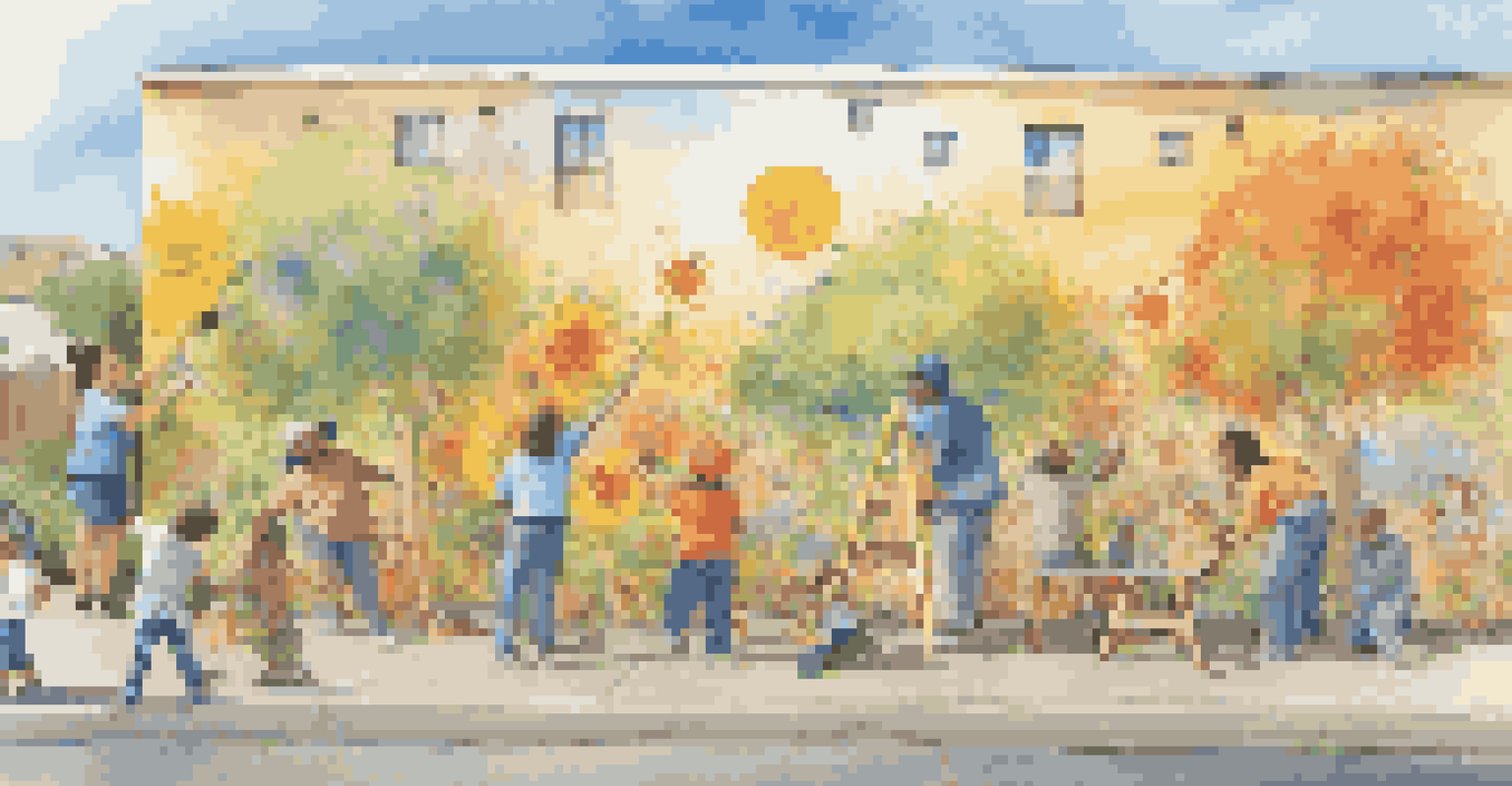The Benefits of Art in Recovery from Substance Abuse

Art as a Form of Expression in Recovery
Art provides a unique platform for individuals in recovery to express their feelings. Many people struggle to articulate their emotions verbally, but through painting, music, or writing, they can communicate their innermost thoughts. This form of expression can be cathartic, helping to release pent-up feelings related to their substance use.
Art is not freedom from discipline, but disciplined freedom.
Creating art allows for a personal reflection of one's journey, often serving as a visual diary. This process not only fosters self-awareness but also encourages individuals to confront their past experiences. By translating their feelings into a physical form, artists can make sense of their emotions, leading to deeper understanding and healing.
Moreover, expressing oneself through art can build confidence. As individuals explore their creativity and produce tangible results, they begin to see their worth and capabilities. This newfound confidence can be a powerful motivator in their recovery journey.
Building Community Through Shared Artistic Experiences
Art can help individuals forge connections and build community, which is crucial during recovery. Participating in group art activities or workshops creates a space for shared experiences and support. When individuals come together to create, they foster camaraderie and understanding, which can alleviate feelings of isolation.

These shared artistic experiences can also help break down the stigma associated with substance abuse. When people share their stories through art, it humanizes their struggles and encourages open dialogue. This not only promotes healing but also educates others about the challenges of recovery.
Art as Healing in Recovery
Art serves as a therapeutic tool, allowing individuals in recovery to express emotions and process trauma.
Additionally, community art projects can lead to a sense of belonging. When individuals contribute their creativity to a collective piece, they feel a part of something larger than themselves. This sense of belonging can be instrumental in reinforcing their commitment to recovery.
Art as a Therapeutic Tool in Substance Abuse Treatment
Art therapy has emerged as a recognized form of treatment for those recovering from substance abuse. This therapeutic approach utilizes the creative process to help individuals explore their emotions, reduce anxiety, and process trauma. Licensed art therapists guide participants in using art as a means to navigate their recovery.
The greatest thing about art is that it can’t be judged. If it moves you, it’s good.
Studies have shown that engaging in art therapy can lead to improved emotional regulation. Participants often find that expressing their feelings through art helps them manage cravings and stress. This can be particularly beneficial during challenging moments in recovery when individuals might feel overwhelmed.
Furthermore, art therapy encourages mindfulness, a practice that can aid in long-term recovery. By focusing on the creation process, individuals learn to stay present, which can minimize the risk of relapse. This mindful approach allows them to develop healthier coping mechanisms for dealing with life's challenges.
Enhancing Self-Discovery Through Creative Practices
The journey of recovery is often intertwined with self-discovery, and art can play a pivotal role in this process. Through creative practices, individuals can uncover aspects of themselves they may have overlooked. This exploration can lead to a clearer understanding of personal values, desires, and motivations.
Engaging in art can prompt individuals to reflect on their identity beyond substance use. As they create, they may discover new passions and interests that contribute to a healthier lifestyle. This self-discovery can provide a sense of purpose, motivating them to pursue their goals with vigor.
Building Community Through Art
Engaging in shared artistic experiences fosters connections, reduces stigma, and creates a sense of belonging among individuals in recovery.
Additionally, art encourages individuals to take risks and step out of their comfort zones. Trying new techniques or mediums can mirror the larger risks involved in recovery. Each brushstroke or note played represents a step toward embracing change and growth.
Fostering Emotional Resilience Through Artistic Expression
Art helps individuals build emotional resilience, an essential skill in recovery. Engaging in creative activities can serve as a healthy outlet for dealing with stress and anxiety. This resilience is crucial as individuals navigate the ups and downs of their recovery journey.
When individuals immerse themselves in art, they often experience a state of flow, where they lose track of time and gain a sense of peace. This state can provide a much-needed respite from cravings and negative thoughts. The act of creating becomes a meditative practice that promotes emotional stability.
Moreover, creating art can help individuals process and reframe negative experiences. By transforming pain into creativity, they gain a sense of empowerment. This shift in perspective can significantly impact their emotional health, allowing them to view challenges as opportunities for growth.
Encouraging Mindfulness and Presence in Recovery
Art encourages mindfulness, which is essential for individuals on the path to recovery. The focus required in creating art draws attention away from distractions and negative thoughts. This practice can help individuals cultivate a sense of presence, making them more aware of their feelings and surroundings.
Mindfulness through art can also reduce anxiety and promote relaxation. As individuals engage in the creative process, they often find themselves in a calming state, which can help mitigate feelings of stress related to recovery. By regularly practicing mindfulness, they can develop healthier coping strategies.
Fostering Resilience and Growth
Creating art promotes emotional resilience and personal growth, helping individuals navigate the challenges of recovery.
Additionally, art offers a tangible way to document their progress in recovery. By observing their artistic evolution, individuals can reflect on how far they've come. This reflection reinforces their commitment to the process and motivates them to continue their journey.
Art as a Catalyst for Personal Growth and Transformation
Art can serve as a powerful catalyst for personal growth and transformation during recovery. By engaging in creative activities, individuals often discover new strengths and talents they were previously unaware of. This realization can be life-changing, providing a path toward a more fulfilling life.
The process of creating art encourages individuals to challenge their limits and embrace change. As they experiment with different forms of expression, they learn to adapt and evolve, mirroring the changes they are experiencing in their lives. This adaptability is a vital skill in sustaining long-term recovery.

Furthermore, art can inspire individuals to set and pursue new goals. As they explore their creative passions, they may uncover aspirations that align with their values. This newfound clarity can enhance their motivation to achieve personal milestones and foster a sense of purpose.